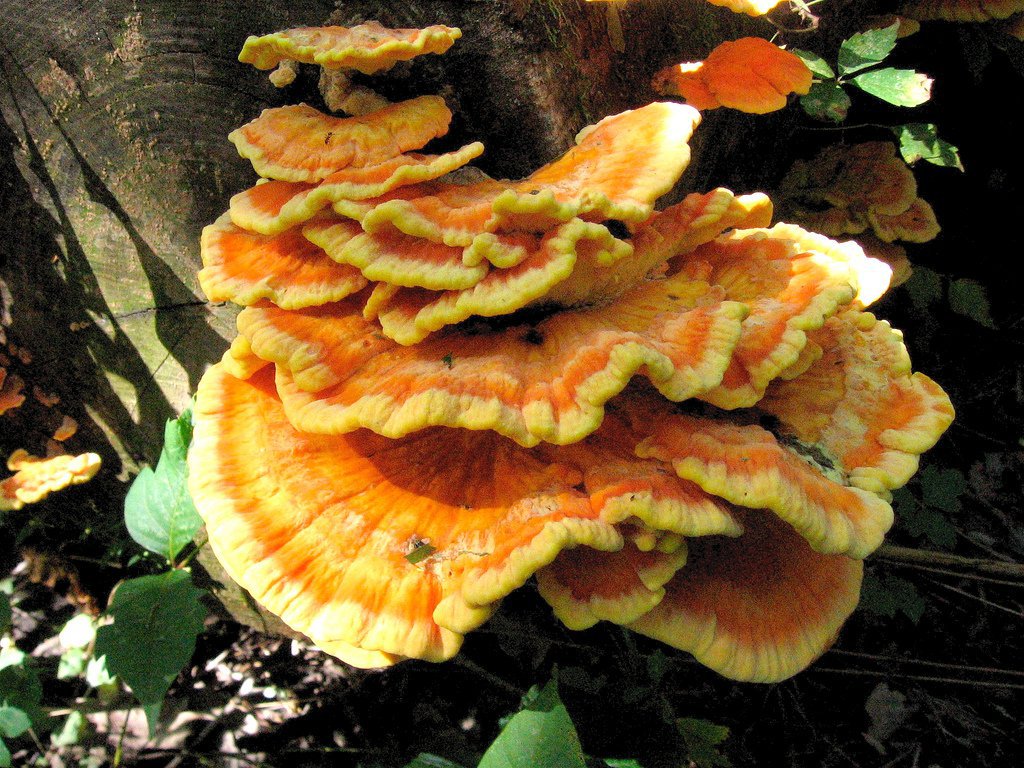

It is popular as the Chicken of the Woods mushroom, Chicken mushroom, Chicken fungus and Sulphur Shelf mushroom. While they all differ a little in the trees they like to grow on and the way they look, in general, they look very similar when identifying Chicken of the Woods.
CHICKEN OF THE WOODS HOW TO
How to Identify Chicken of the Woods Mushroom? If not, there’s always next season.The Chicken of the Woods identification characteristics make it easy to identify and distinguish from it’s poisonous look alike.Ĭhicken of the woods mushroom is a member of the laetiporus genus and 3 most common wild edible species are: Its a little late in the season, but I’m sure there are still a few in your area, particularly if you live further south. Check back later for some great recipes you can use on this fantastic mushroom. These are the basics, which should go a long way to getting you started with Chicken of the Woods.

If you’ve cooked too many, the mushrooms will survive your freezer (once cooked), so don’t be afraid to save them for later. They can be sautéed, baked or fried, depending on your taste. As these are quite large, cut them into small pieces to cook. Wipe them with a damp cloth to clean, and refrigerate them no longer than a week. One indicator is a clear ooze, which young ones emit when you slice them. To cook the Chicken of the Woods, start with a young, freshly picked specimen. While that is area dependent, figure August to October as a general rule of thumb. All these mushrooms grow more prominently in late-summer through fall. Avoid any of the last, growing on oaks or eucalypti, as they are the most likely to cause the aforementioned gastric distress. The first mentioned will have a slightly more reddish hue, while the second veers more toward yellow.

The three most common are the Laetiporus Cincinnatus, usually found in the east, the Laetiporus Conifericols, usually found in the West, and the Laetiporus Gilbersonii, only found on oaks and eucalyptus trees in the West. Underneath, the caps sport white-yellow pores, instead of the more common mushroom gills. Cut open, the inside color should match the outside. The layers are fan shaped, and range from completely smooth to lightly wrinkled. One easy identifier is the lack of a stem on any of these mushrooms, hence the tightly overlapping layers. That just means you’ve stumbled on an older, probably quite large sample. The older and larger the mushroom the more that orange fades by the way, so don’t be put off if it looks faded. In addition to their color, you can easily recognize these mushrooms from their overlapping layers. As these are parasitic mushrooms, you can most often find them feeding either on already dead trees, or on live ones they are rotting the wood of, generally at the base.

Not really relevant to anyone but the scientists, but a fun fact I think bears repeating. If you’re wondering why I called it a polypore, its because this mushroom disperses spores through small pores under their caps. Chicken of the Woods can cause gastric distress in some folks, so just try a little your first time, to avoid a possible visit to the bathroom. Another thing to note, its not just taste that varies. Just depends on how your taste buds are structured, I guess. Some folks describe its taste as exactly akin to chicken, others reckon it’s more like crab. The name is partially derived from its zesty, meaty taste, and partially from its commonality. It’s large, generally prominently placed, and radiant orange in color. Read on for how to identify this mushroom, as well as some great ways to prepare it. Have you heard of Chicken of the Woods? No, it’s not a dove, or even a turkey-it’s yet another vibrant, easily identifiable mushroom that will make a delicious addition to your table.


 0 kommentar(er)
0 kommentar(er)
